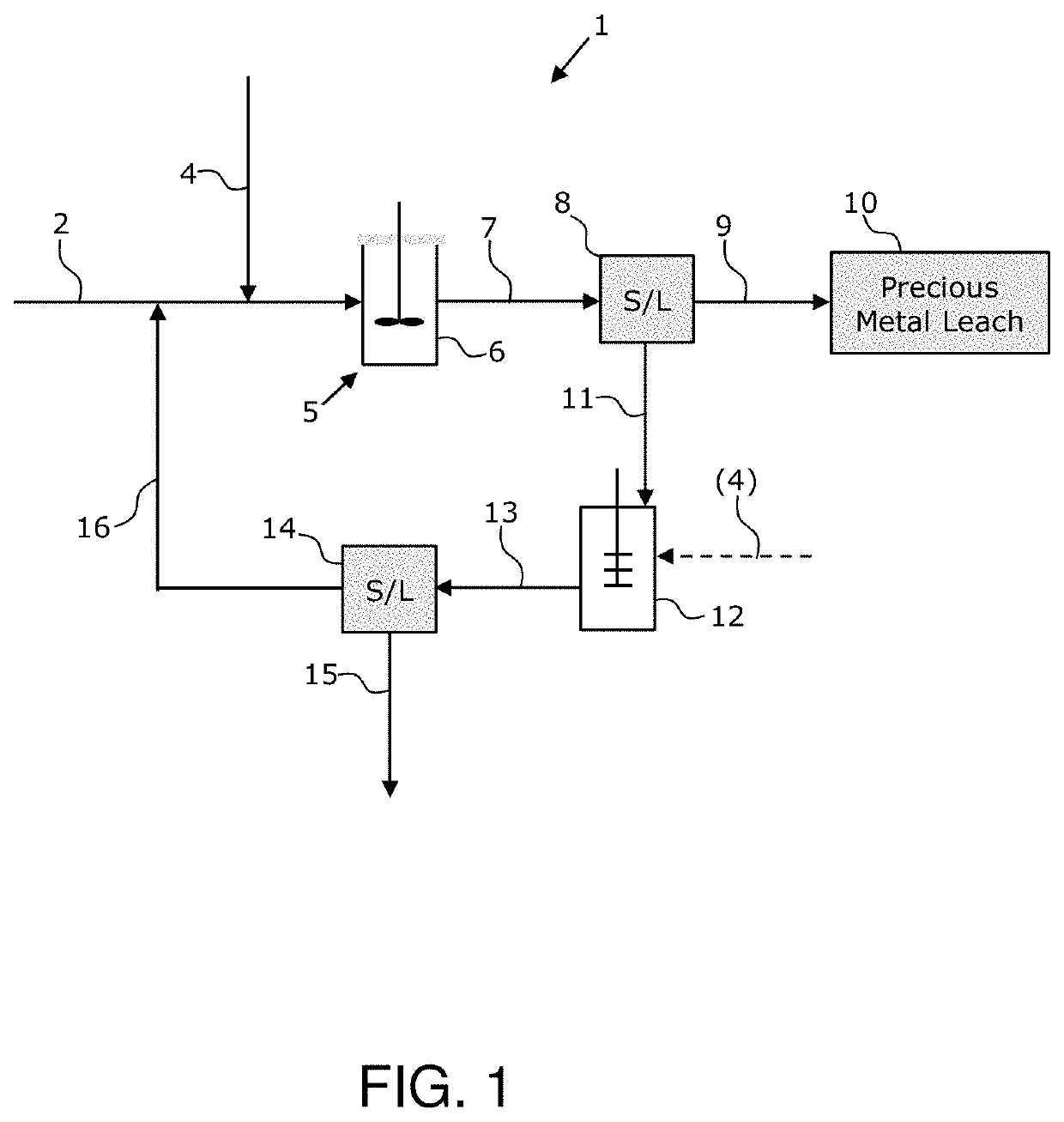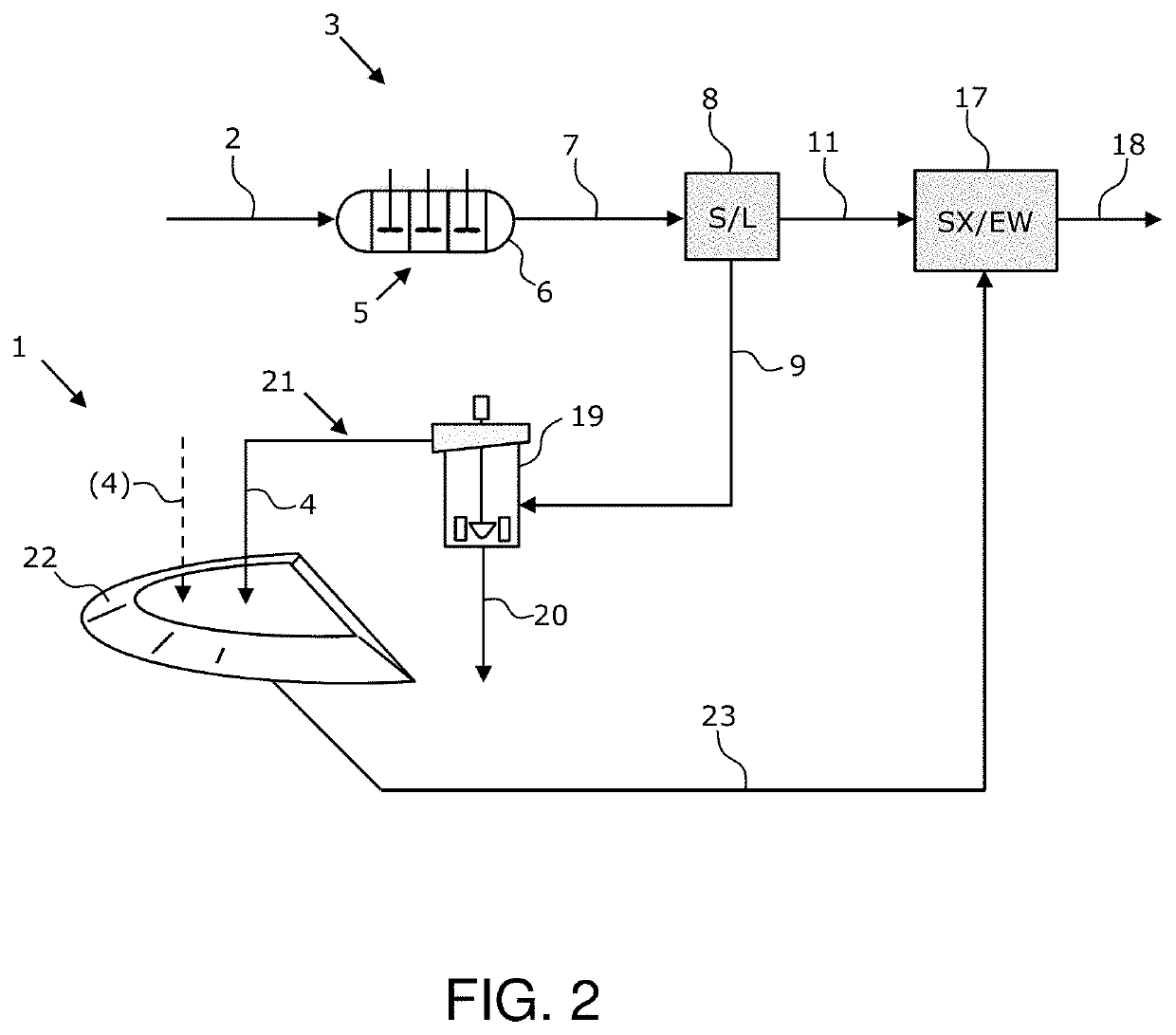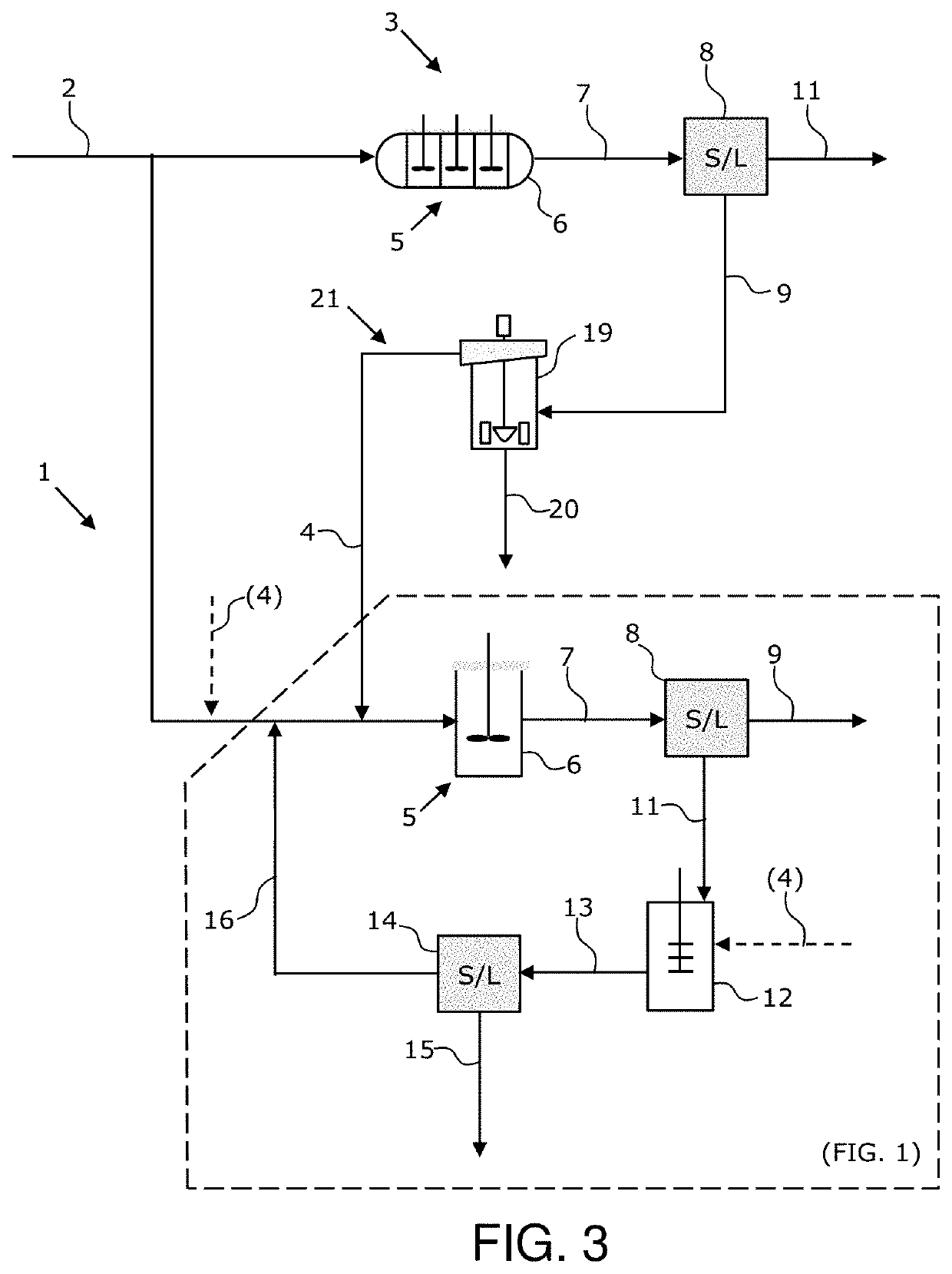Solid-state catalysts for low or moderate temperature leach applications and methods thereof
a technology of solid-state catalysts and leaching processes, which is applied in the direction of metal/metal-oxide/metal-hydroxide catalysts, physical/chemical process catalysts, chemistry apparatuses and processes, etc., can solve the problem of difficult filtering, adversely affecting the leaching kinetics of passivation, and the production of elemental sulfur as a reaction product, etc. problem, to achieve the effect of reducing or eliminating the conversion of sulfid
- Summary
- Abstract
- Description
- Claims
- Application Information
AI Technical Summary
Benefits of technology
Problems solved by technology
Method used
Image
Examples
example 1
[0083]Several pressurized leach tests were performed to illustrate the ability of the inventive solid-state catalyst to enhance the oxidation of sulfide to sulfate and thereby minimize the production of elemental sulfur as a reaction product in metal sulfide leaching. Elemental sulfur production is especially problematic in downstream cyanide leach recovery of precious metals from refractory gold ores and concentrates thereof. This series of batch tests was conducted in a 2 L titanium Parr reactor with a refectory gold concentrate containing approximately 25 wt. % pyrite.
[0084]The leach tests were conducted in sea water with added 5 gpL Fe(III) as the chloride salt and an oxygen overpressure of 100 psig. The concentrate sample used in the tests had a P80 of approximately 110- to 120-micron and a P98 of approximately 300 micron. A solid-state catalyst (in particular, pulverized iron ore containing predominantly Fe2O3 and minor amounts of FeOOH) was mixed directly into the feed slurry...
example 2
[0086]A series of pressurized oxidation tests were conducted. The oxidation tests appeared to demonstrate the ability of the inventive solid-state catalysts to promote efficient oxidation of soluble species (e.g., Fe(II)→Fe(III), As(III)→As(V)) under acidic chloride and sulfate conditions. Those skilled in the art will understand that the oxidation rates of Fe(II) to Fe(III) in sea water systems are significantly slower than in fresh water (Ref.: F. J. Millero, “The effect of ionic interactions on the oxidation of metals in natural waters,” Geochimica et Cosmochimica Acta, Vol 49, Issue 2, pp. 547-553, 1985), thus low-cost, mineral-based catalysts that can accelerate ferrous oxidation rates would especially be of value in chloride-based hydrometallurgical leach systems.
[0087]Ferrous iron, contained in sea water raffinate solutions obtained from the atmospheric pre-oxidation of refractory gold concentrates, was efficiently oxidized to ferric iron. The oxidation was done under pressur...
example 3
[0090]Turning now, to FIG. 7, in this test, a copper sulfide concentrate containing chalcopyrite, covellite, bornite, enargite, and chalcocite, in descending order of concentration, was leached in a Parr reactor at 130° C. with an oxygen overpressure of 100 psig for 1 hour. The concentrate solids, which included 5 wt. % Fe2O3-based catalyst, were dispersed at 10 wt. % in sea water along with 5 gpL Fe(III) as ferric chloride. The P80 and P98 of the copper concentrate was approximately 86- and 208-micron, respectively.
[0091]In this test, 56% of the oxidized sulfide was converted to sulfate and only 44% was oxidized to elemental sulfur. The unexpectedly high sulfate yield can be considered to be an advantage in downstream cyanide leaching of precious metals. In contrast to other pressurized chloride leach processes (e.g., the CESL Process) where most of the sulfide is oxidized to elemental sulfur, the use of the inventive solid-state catalysts yields primarily sulfate.
[0092]The inventi...
PUM
| Property | Measurement | Unit |
|---|---|---|
| temperature | aaaaa | aaaaa |
| temperature | aaaaa | aaaaa |
| temperature | aaaaa | aaaaa |
Abstract
Description
Claims
Application Information
 Login to View More
Login to View More - R&D
- Intellectual Property
- Life Sciences
- Materials
- Tech Scout
- Unparalleled Data Quality
- Higher Quality Content
- 60% Fewer Hallucinations
Browse by: Latest US Patents, China's latest patents, Technical Efficacy Thesaurus, Application Domain, Technology Topic, Popular Technical Reports.
© 2025 PatSnap. All rights reserved.Legal|Privacy policy|Modern Slavery Act Transparency Statement|Sitemap|About US| Contact US: help@patsnap.com



